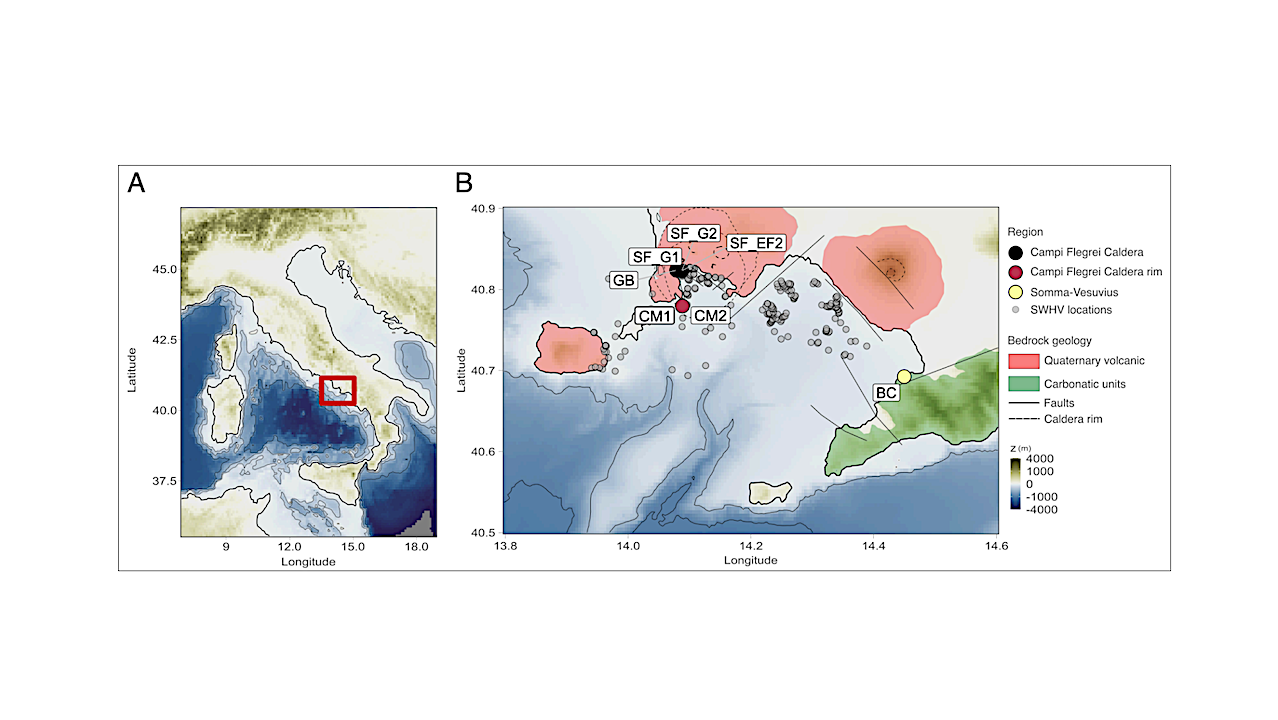Author: admin
-

Instagram gets major redesign as new layout prioritizes reels, DMs
Instagram is currently…
Continue Reading
-

Urate-Lowering Therapy for Gout Improves Patients’ Quality of Life
Treat-to-target urate-lowering therapy (ULT) is considered best practice in gout management, yet its impact on health-related quality of life (HRQoL) remains unclear. A post-hoc analysis of a randomized, multicenter trial by Austin Barry, MD, and…
Continue Reading
-

Xi’an Grand Prix: Ronnie O’Sullivan out as Gary Wilson wins 5-2
Gary Wilson produced an impressive performance to beat seven-time world champion Ronnie O’Sullivan 5-2 in the Xi’an Grand Prix quarter-finals.
Wilson took command from the start with breaks of 74, 101 and 79 putting him 3-0 up, but fouls in the…
Continue Reading
-

Pakistani police arrest more than 100 protestors in Lahore
LAHORE, Pakistan (AP) — Pakistani police have arrested more than 100 people following violence in the eastern city of Lahore, a senior official said Saturday.
Supporters of the radical Islamist political…
Continue Reading
-

Back Pain Is Common. Neurosurgeon Shares When To Worry And When To Act
Person holding their lower back because of pain
getty
Back pain is the world’s leading cause of disability, affecting more than 619 million people globally, according to a 2020 report from the World Health Organization. Few conditions have such a wide range of causes — from temporary muscle spasms to terminal metastatic cancer. While back pain is often fleeting and mild, there are key signals that help physicians distinguish between benign and more serious causes.
I spoke with Dr. Lindsey Ross, a neurosurgeon who specializes in the spine, about the truths and misconceptions around back pain. She also shared how A.I. technology is reshaping the future of spine care.
Common Causes of Back Pain
According to the Mayo Clinic, the most common causes of back pain include muscle or ligament strain, which can occur from lifting or sudden movements; bulging or ruptured disks, where the cushions between vertebrae press on nerves; arthritis, which can lead to a narrowing of the space around the spinal cord; osteoporosis, or weakened bones that can fracture; and ankylosing spondylitis, a chronic spinal inflammatory disease.
Lifestyle choices, Ross adds, play a major role in both the development and persistence of back pain. Obesity, sedentary habits, and heavy manual labor all increase risk. Many patients believe resting in bed or on the couch will alleviate their back pain. Ironically, inactivity often worsens pain over time. “Patients who are very sedentary tend to have more back pain,” Ross says.
This can create a loop where pain limits activity, inactivity weakens muscles, and weaker muscles worsen the pain. Escaping this “pain cycle,” she explains, requires gradual, guided movement and addressing the mental side of chronic pain. “It’s hard to get out of this cycle.”
When Back Pain Could Signal Something Serious
Many patients—especially those with new, persistent back pain—worry that their symptoms could signal something more serious, like cancer, fractures, or infection. It is important not to ignore these symptoms particularly if they have never been evaluated by a physician.
Portrait of Dr. Lindsey Ross
Kerry James
General warning signs include personal or family history of cancer, unexplained weight loss, persistent fatigue, age over 50, and pain that worsens at night. Pain that isn’t clearly linked to posture, movement, or activity —”especially pain that wakes you at night — should be evaluated.” Most pain related to arthritis or aging should not worsen when you are resting in bed, Ross notes.
Urgent red-flag symptoms that require immediate medical attention include new weakness or numbness in the limbs, difficulty walking or maintaining balance, loss of bladder or bowel control, high fever, or a history of intravenous drug use. These may indicate serious spinal pathology and should prompt emergency evaluation. In the ER, a physician will take a history, perform a physical exam, and determine whether imaging or urgent consultation with a spine specialist is needed. “Conditions that cause loss of function are time-sensitive,” Ross emphasizes. “They must be addressed immediately to restore functionality.”
When To Get Imaging for Your Back Pain
Even when imaging is considered, restraint is important. 75% of people in developed countries will experience some sort of back pain in their life, and “most times the pain will improve with rest and conservative treatment,” says Ross. MRI or CT scans are typically warranted only if pain lasts longer than three months or if general warning signs or urgent red-flag symptoms appear.
Ross cautions that unnecessary imaging can reveal incidental findings, which may lead to unnecessary procedures. She recalls one patient who had a CT scan for kidney stones that incidentally revealed a benign nerve tumor. “She did not have back pain, but after the biopsy she developed severe pain that radiated down her legs,” she says. “All procedures and interventions have risk, even if very small.”
For new, mild back pain without red-flags, a primary care physician is usually a safe first stop. Ross often sees patients who don’t need surgery but benefit from a spine specialist’s guidance toward “the correct and evidence-based care.”
Non-Surgical Treatment of Back Pain
Ross emphasizes that there are many proven, nonsurgical options for managing back the majority of back pain cases. These include improving posture and ergonomics, building core strength through physical therapy, and exploring complementary approaches such as chiropractic manipulation, acupuncture, and massage. Short-term use of anti-inflammatory medications or muscle relaxants can also help.
One study found that cognitive behavioral therapy (CBT), a form of talk therapy, and has shown supportive evidence for improving pain, disability, fear avoidance, and self-efficacy in patients with chronic low back pain. Ross herself has conducted research using virtual reality platforms to deliver CBT remotely, an approach she says has been successful and is now FDA-approved for patients with chronic low back pain.
Surgical Treatment of Back Pain using AI
Dr. Lindsey Ross in the operating room
Dr. Lindsey Ross
When conservative measures are ineffective or insufficient, surgery may be an option. It is important for patients to have reasonable expectations, however. Not every patient will improve after surgery. One study found that over two years, recurrent disc herniation occurred in up to 23% of patients and reoperation rates ranged from up to 13%.
Recovery can range from six weeks for a simple procedure to many months for complex spinal reconstructions. Ross shares that there are efforts to decrease downtime for patients. “Minimally invasive techniques such as the use of tubes, endoscopy and small incisions tend to be associated with quicker recoveries. Artificial disc replacements which maintain motion in the spine often have a quicker recovery than fusion surgeries.”
Ross says the operating room itself is changing fast. “We are in the age of artificial intelligence and robots,” she notes. “Most major spine centers and hospitals have a spine robot.” These tools assist in precise screw placement, improving safety and reducing surgeon fatigue. Artificial intelligence also helps plan hardware positioning and may eventually guide surgeons toward the best approach for each patient’s anatomy and biology.
The Bigger Picture
Back pain isn’t just a personal health issue—it’s an economic one. About three million people are chronically disabled by low back pain, leading to an estimated 149 million lost workdays each year.
Despite those numbers, Ross says many patients still overlook the most effective solutions: movement, education, and consistent self-care. “While only a small percentage of patients are appropriate candidates for spine surgery,” she says “many overlook evidence-based approaches to back pain management.” Education and lifestyle modifications — such as exercise, weight management, and activity adjustments — can lead to significant improvement for many.
Ross reminds us most back pain is not life or limb threatening and can improve without surgery. Knowing when to act—and when to seek urgent help—can make all the difference.
Continue Reading
-

Samsung’s Surprise Galaxy Update—Now Just 6 Weeks Away
Surprise update here soon.
NurPhoto via Getty Images
When it comes to Android updates, Samsung is playing catch-up with Pixel. Android 16 is now rolling out across its install base, bringing a raft of security and privacy upgrades. Now Samsung has…
Continue Reading
-
KP Governor confirms receiving of resignation of CM Gandapur – RADIO PAKISTAN
- KP Governor confirms receiving of resignation of CM Gandapur RADIO PAKISTAN
- Info Minister Tarar assails PTI-led KP govt for ‘facilitating terrorists, sowing division’ Dawn
- Numbers in focus ahead of Afridi seeking trust vote The News…
Continue Reading
-

Trump blames Democrats as he lays off thousands of federal workers amid shutdown
President Donald Trump on Friday blamed…
Continue Reading

